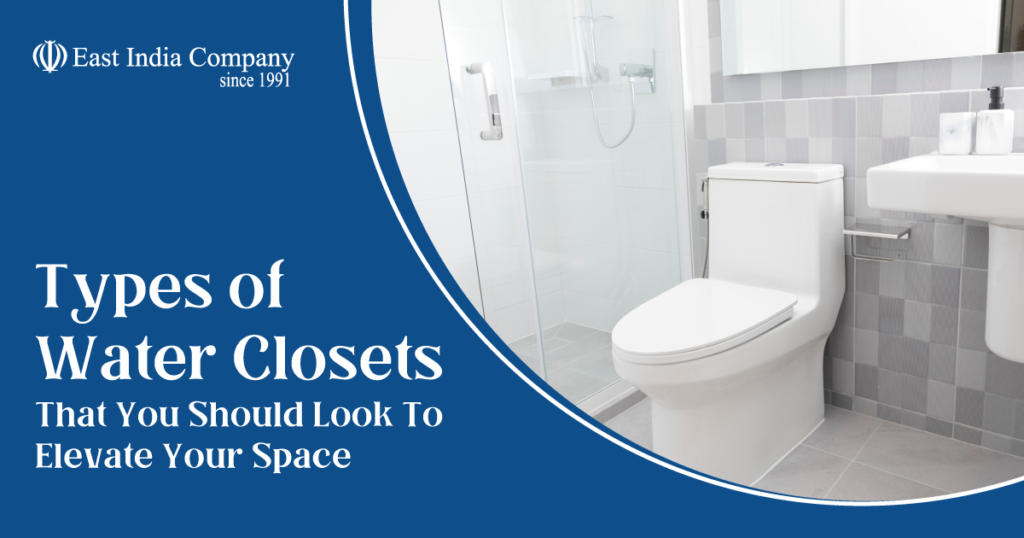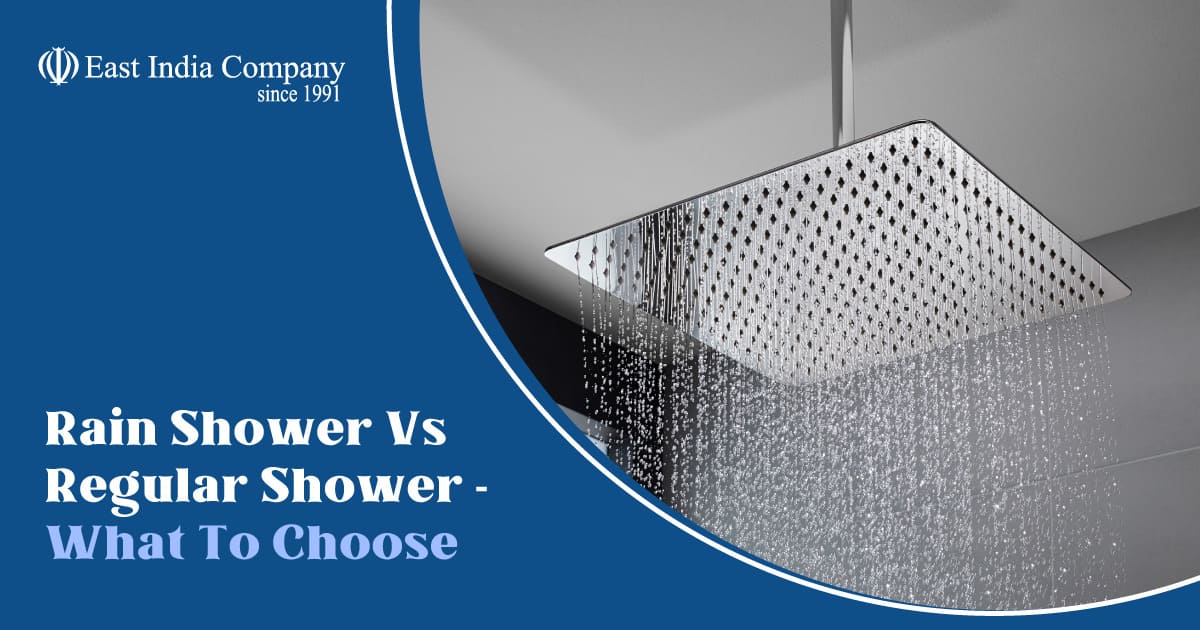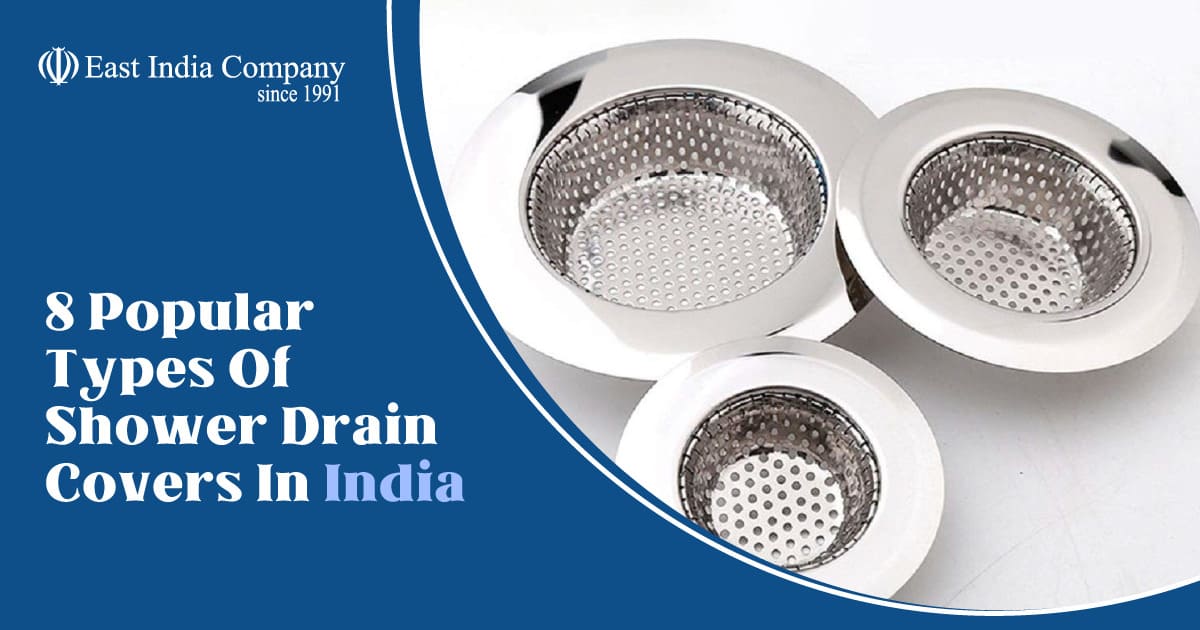Introduction
As leading sanitaryware suppliers in Chennai with decades of experience in bathroom design, we at East India Company understand that the toilet is often overlooked as a key feature that can elevate the aesthetics and comfort of your bathroom.
Beyond the basic white porcelain throne for necessity’s sake, many water closet styles and technological advancements can transform your bathroom into a relaxing oasis.
In this comprehensive blog, we dive into the details of different types of water closets available today. We’ll look at various designs, features, installation considerations, and tips for choosing the right water closet and bathroom decor for your needs.
Read on to learn how to take your bathroom functionality and interiors to the next level with a well-suited water closet.
Is the water closet and toilet the same?
First, let’s clarify what exactly a water closet is and how it differs from a toilet.
A water closet refers specifically to a bathroom fixture that is connected to the sewage system and uses water to flush away human waste. The term encompasses both toilets and urinals that utilise water for flushing.
The main components of a water closet toilet are:
- Toilet bowl: Receives and evacuates waste & water into the drain
- Toilet tank: Holds fresh water for flushing the toilet bowl
- Toilet seat and lid
- Flushing mechanism: Buttons, levers, or sensors that trigger the flush
A toilet is essentially a subtype of water closet– namely, a sitting latrine with a bowl, seat, and flushing device. Besides water closet, other common interchangeable terms used are bathroom, lavatory, WC, and commode. However, water closet is the most precise terminology.
What are the types of water closets you should look for to elevate your space
Today, the market presents several types of water closet designs catering to different interior decoration tastes, space considerations, and functionalities.
1. One-piece water closet
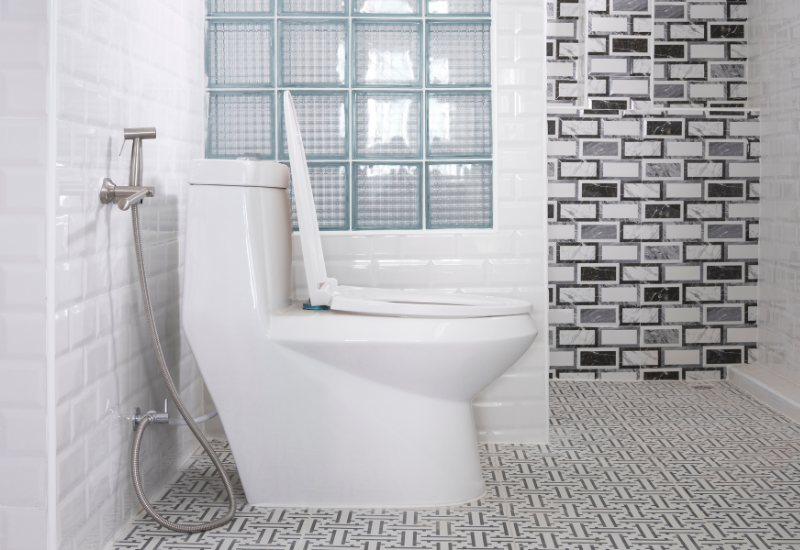
As the name suggests, this type consists of a single integrated vitreous china unit where the tank and bowl are fused seamlessly together rather than separately. The smooth, continuous profile lends a neat, contemporary look.
Benefits of one-piece water closets include:
- Space-saving compact design
- Easy to clean with no joints or crevices
- Hidden inner trap ways to improve hygiene and facilitate waste removal
2. Two-piece water closet

Two-piece water closets have a separate cistern tank and toilet bowl linked via a coupling kit. This gives greater installation flexibility to position the tank remotely and change only one part if required. The variety of bowl shapes and tank styles enables versatile design options.
Benefits of two-piece water closets include:
- A wider range of styles– contemporary, classic, ultra-slim tanks, etc.
- Easier to repair faults in either the tank or bowl independently
- Affordable replacement of only damaged parts
- Suitable for restricted spaces with wall-mounted small tanks
3. Wall-mounted water closet
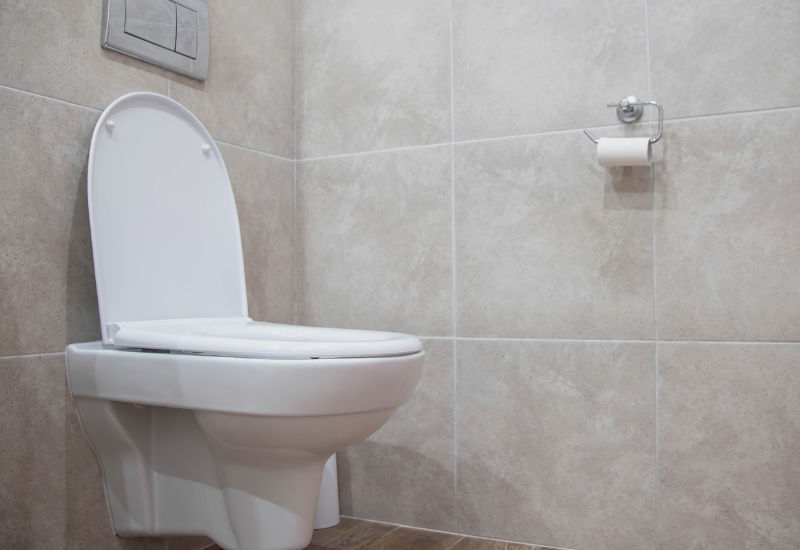
As the name suggests, wall-mounted water closet bowls attach directly to the bathroom wall rather than sitting on the floor. The contemporary, sleek design saves space since installation is flush with the wall, and no clearance is needed for the base or behind. This also enables easier floor cleaning.
Ensure your walls have adequate structural support to hold a wall-hung toilet weighing around 50-90 pounds when in use. Reinforced framing or carrier plates may be required.
Benefits of wall-mounted water closets include:
- Saves floor space as it is mounted on the wall, making small bathrooms feel more spacious.
- Easy to clean underneath as there is no base or crevices collecting dirt.
- Contemporary, sleek design that enhances the visual appeal of the bathroom.
4. Extended wall-mounted water closet
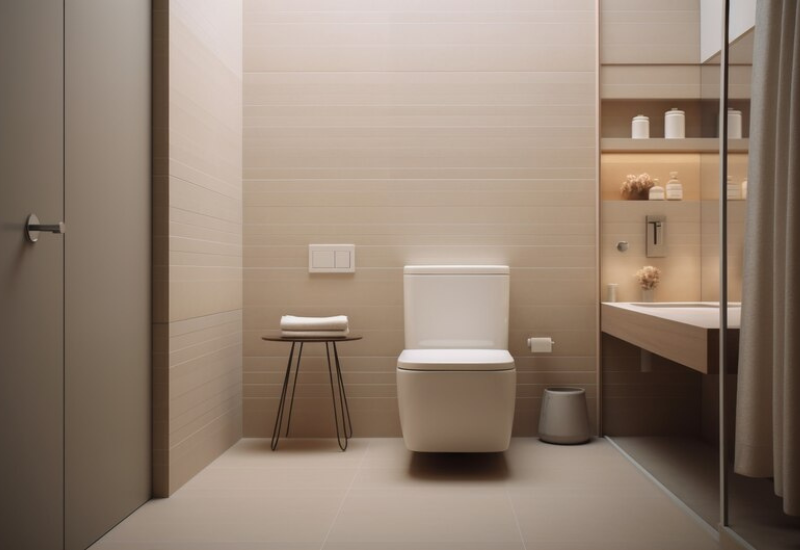
For a minimalist, avant-garde look, opt for extended wall-mounted water closets. As the name denotes, these have extra-elongated bowls and slim tanks that jut slightly from the wall without connecting to the floor.
The extended bowl silhouette adds drama and depth, while the wall-hung style imparts an airier sense of space.
Benefits of extended wall-mount closets include:
- An elongated silhouette creates a dramatic visual effect in the bathroom.
- The jutting design maintains a sense of airiness despite using wall space.
- A sleek profile complements modern, minimalist bathroom aesthetics.
5. Pedestal water closet
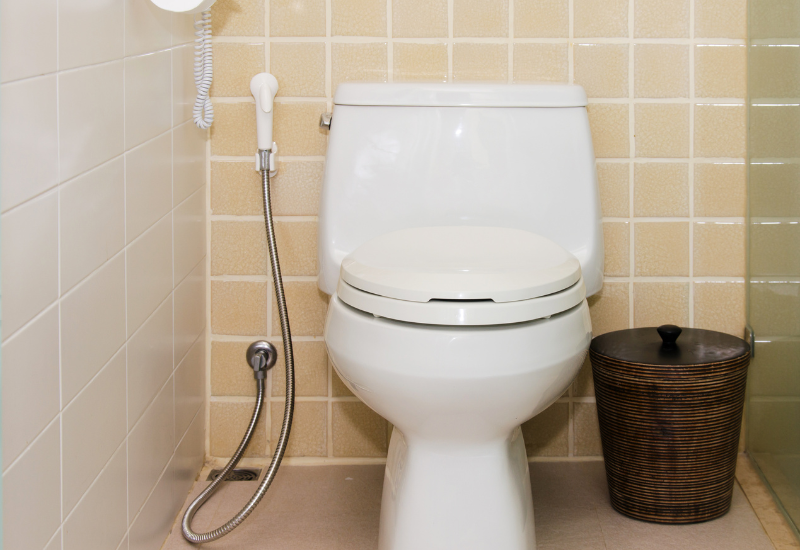
A pedestal water closet is a toilet that sits on a raised platform or pedestal above the floor. This elevated design allows for easy access and cleaning underneath.
Benefits of pedestal water closets include:
- Easy to clean underneath.
- Raised height makes it more accessible for all ages and abilities.
- Takes up less floor space than wall-mounted or back-to-wall toilets.
6. Smart water closet
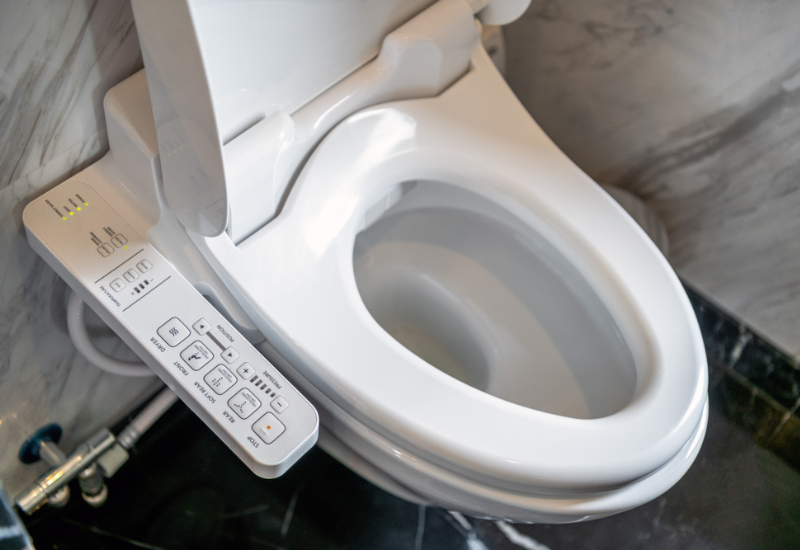
Smart toilets are integrated with the latest technology to offer the utmost comfort, customisation, and connectivity features electronically.
Options include:
- Touchscreen remote controls or smartphone app operation
- Automatic hands-free flushing and auto-opening/closing lids
- Built-in LED lighting, ambient music, and air purification
- Bidet functionality with temperature-controlled washing
- Heated seating and anti-bacterial surfaces
- Water usage tracking and leak alerts
Benefits of smart closets include:
- Provides luxurious features like heated seats, automatic flushing/lids, etc.
- It can be controlled remotely via an app for enhanced convenience.
- Some models include functions like built-in bidets and air purification.
7. Back-to-wall closet
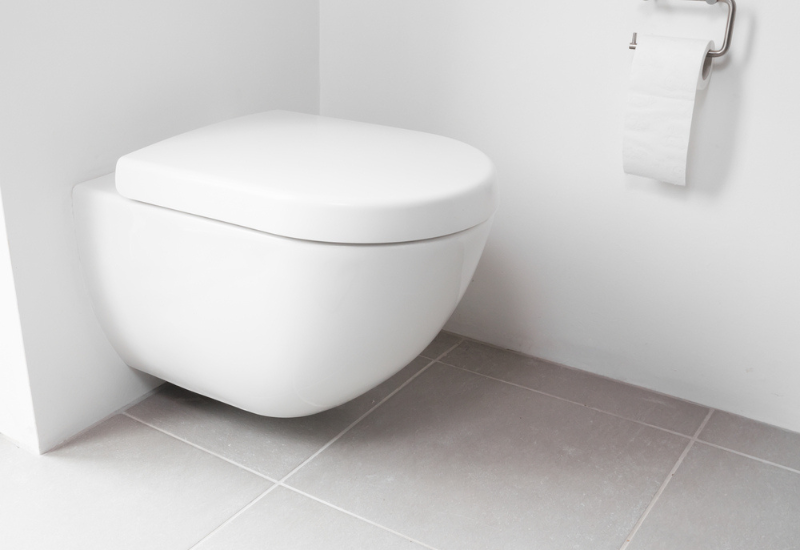
In a back-to-wall water closet, the cistern fittings and drainage pipes are all concealed inside the bathroom wall cavity. Only the ceramic bowl, tank, and operating flush plate are visible to the user. This offers a very tidy finish post-installation without any exposed plumbing.
Benefits of back-to-wall water closets include:
- Completely concealed cisterns and pipes result in a very tidy, seamless look.
- No exposed plumbing maintains a minimalist aesthetic.
- Easy to clean smooth wall surface devoid of fixtures.
Browse through East India Company’s collection of toilets/closets!
- Coupled WC Rimless
- Tankless WC
- Wall Hung Bidet
- Bidspa (Electronic WC)
- Single Piece WC Rimless
- Wall-hung WC Rimless
How to choose a water closet?
Here are some tips for selecting the most suitable water closet model for your bathroom space and requirements:
- Complement Decor Style: Choose a water closet design style and finish that aligns with your bathroom’s overall decor scheme–be it modern, classic, rustic, or minimalist. Coordinating faucet fixtures accordingly.
- Colour and Texture: Select a vitreous china water closet in a shade that complements other bathroom fittings. For instance, pair white closets with nickel or chrome faucets and hardware or black with oil-rubbed bronze. Also, consider materials like metal, solid surface resin, and wood.
- Ergonomic Comfort: Assess age, accessibility needs, and comfort. Test different water closet bowl shapes, heights, elongated vs round front, etc., and pick the most relaxing and easy to use.
- Customised Features: Determine which features would improve your experience – options like ambient lighting, bidets, heated seats, automated hands-free flushing, air purification, etc. Also, factor cleanup convenience.
- Dimensions: Carefully measure your bathroom space to determine the appropriate water closet width, depth, and height that will fit without encroaching on the floor area or feeling too cramped.
- Efficiency Certifications: Opt for EPA WaterSense-approved water closets certified to save 20% or more water through high-efficiency flushes, dual flush mechanisms, 4 litres per flush or less, etc. For commercial bathrooms, select ADA-compliant, accessible models.
- Durability and Maintenance: Evaluate materials like vitreous china, solid surface, or stainless steel that are easy to clean, resist staining, and require minimal upkeep. Consider features like concealed tramways.
- Price Point: Set a budget and filter options accordingly. Premium smart models may cost more but offer enhanced conveniences. Basic functional units are affordable. Assess if added benefits justify higher costs.
- Professional Installation: For complex wall-hung, back-to-wall, or sensor models, consult professional plumbers for installation to avoid leaks or issues down the line requiring expensive repairs.
- Warranty and Support: Choose a reputed brand that offers after-sales services, spare parts availability, and a minimum 1-year manufacturer’s warranty against defects.
Purchase your water closet at East India Company!
East India Company is a leading sanitaryware store in Chennai that offers a wide range of quality water closets. We have options from top brands to suit all budgets and bathroom styles.
Our experienced team can help you select the perfect WC based on the size and layout of your bathroom. We also offer installation and after-sales services. Customers appreciate our attention to detail and timely delivery. Visit our showroom to browse our collection. You can also shop online on our website for convenient delivery.
Purchase your new water closet from East India Company and elevate the look and functionality of your bathroom space!
Conclusion
With the different types of water closets present, installing the right water closet tailored to your specific bathroom layout, budget, and needs can elevate the space into a zen-like oasis that is both beautiful to behold and relaxing to use. From sleek contemporary designs to smart high-tech models, a water closet exists for every taste today.
FAQs
1. What are the types of water closets?
The main types of water closets are flush tank, back-to-wall, close-coupled, and wall-hung.
2. Which type of WC is the best?
The best type depends on factors like space, aesthetics, cost, etc. Close-coupled or back-to-wall WCs are generally more space-efficient. Wall-hung WCs are easy to clean but may not suit small bathrooms.
3. Is WC and commode the same?
Yes, WC and commode refer to the same thing, which is a toilet or water closet. Commode is an older term for a toilet.
4. Which toilet is most used nowadays?
The most common toilet nowadays is the flush tank WC, the most basic and affordable type.
5. Which toilet uses less water?
Toilets that use less than 6 litres/1.5 gallons of water per flush are considered low-flow or high-efficiency toilets. They use less water than older toilets and help conserve water. Dual-flush toilets, which have half or full-flush options, can also reduce water usage.

